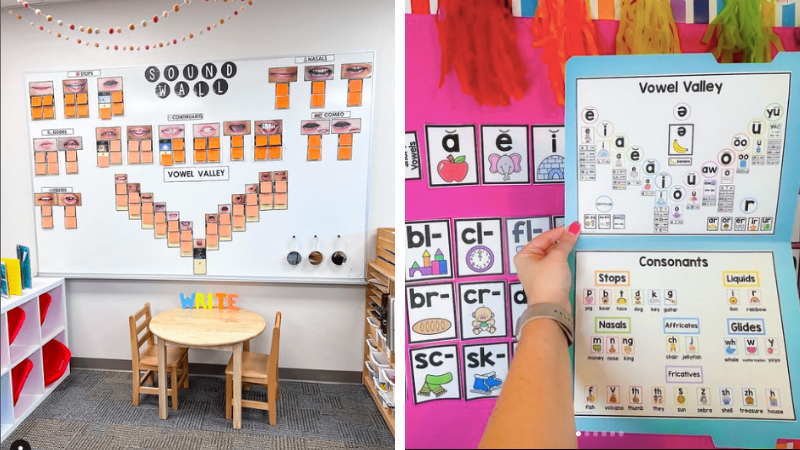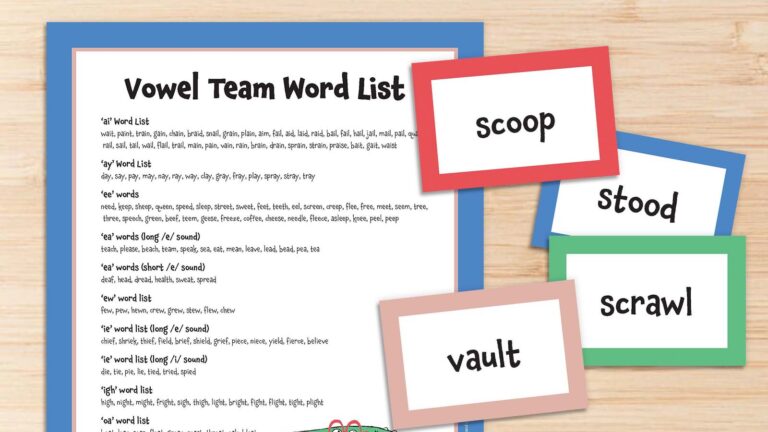All the conversations happening about literacy learning and the science of reading definitely encourage teachers and schools to look carefully at their instructional practices—and, often, to explore new ones that help kids. One of these is the sound wall. Check out these fantastic resources to get you started using one in your classroom.
What is a sound wall?
This student resource shows the 44 phonemes (sounds) in the English language. It includes consonant sounds and vowel sounds and the various ways to spell each sound.
How is a sound wall different from a word wall?
A sound wall is not a word wall. These two resources are different because:
- To use a word wall, one must be able to read the words, so kids often need teacher help. A sound wall encourages independent use. It helps kids progress from what they can do—say sounds—to what they are learning to do—spell and read words that include those sounds.
- A word wall is organized in alphabetical order. Words are sorted by the first letter of each word. They are usually high-frequency words or other often-used words, like students’ names. A sound wall is organized by how sounds are produced. Example words may include those sounds in any position in the word. A sound wall also includes sounds represented by combinations of letters.
- A word wall helps kids learn individual words. A sound wall aims to help kids apply letter and sound knowledge to any applicable word.
How do you set up a sound wall?
1. Map out your space.
A sound wall should have two distinct sections, one for all the consonant sounds and one for the vowel sounds. You can plan to set up the wall with students as you teach sounds, or set up the entire display and cover sounds until you teach them.
Arrange consonant sounds based on how we articulate them, from the front of the mouth to the back of the throat. Sounds that are produced similarly are grouped together. For instance, /p/ and /b/ use the same mouth position, though /p/ is unvoiced and /b/ is voiced. They are neighbors on the sound wall.
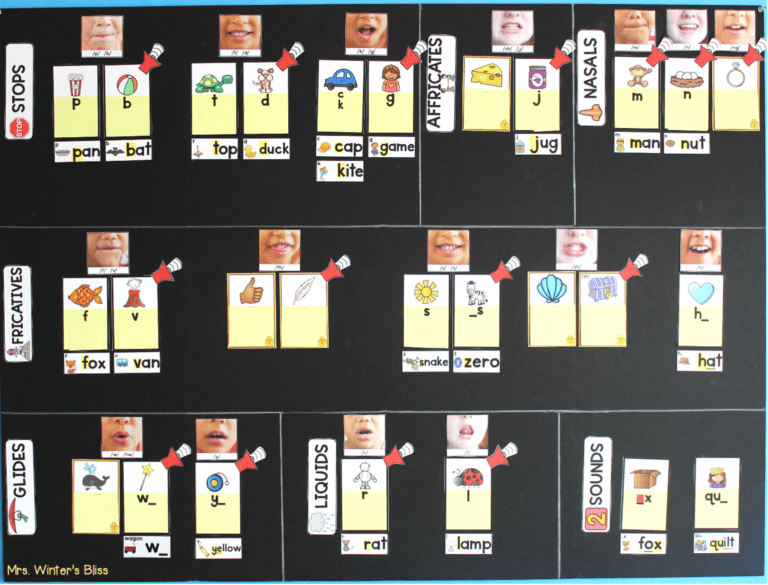
Source: Mrs. Winter’s Bliss
Arrange vowel sounds in a “valley” shape that reflects how the mouth opens to make each sound. The long /e/ sound uses a wide grin shape. (Think, “Cheese!”) The short /o/ sound uses an open “o” mouth shape and represents the bottom of the valley.

Source: Mrs. Winter’s Bliss
For a full run-down on the articulation of the 44 phonemes in the English language, and tips for introducing them to kids, check out this training from literacy specialist Mary Dahlgren around the 39-minute mark. Also check out her blog post for more about laying out the space to support instruction.
2. Add picture cues and alternative spellings of sounds.
Picture cues with example words for each sound are super-helpful, as are photos of kids’ mouths producing each sound. As kids become familiar with the most common spellings of each sound, you can introduce alternative spellings—for instance, the /c/ sound can be spelled with c, k, ck, or even ch as in “school.” You can add these below the primary spelling.

Source: @drcorteswrites
3. Use it for teaching!
A common complaint about classroom word walls is that it’s easy for them to become part of the classroom wallpaper. So put that sound wall to work! Teach kids what the speech-related terms mean. Develop routines for teaching about each individual sound, or work it into your existing phonological awareness and phonics programs. Mrs. Winter’s Bliss has a helpful step-by-step primer.
More sound wall inspiration and tips
A sound wall can be daunting to set up, especially if this way of thinking about and teaching sounds is new to you. Here are some more examples and possibilities to inspire you.
Repurpose materials you already have
You don’t need to start from scratch—you can rearrange alphabet cards you already have!
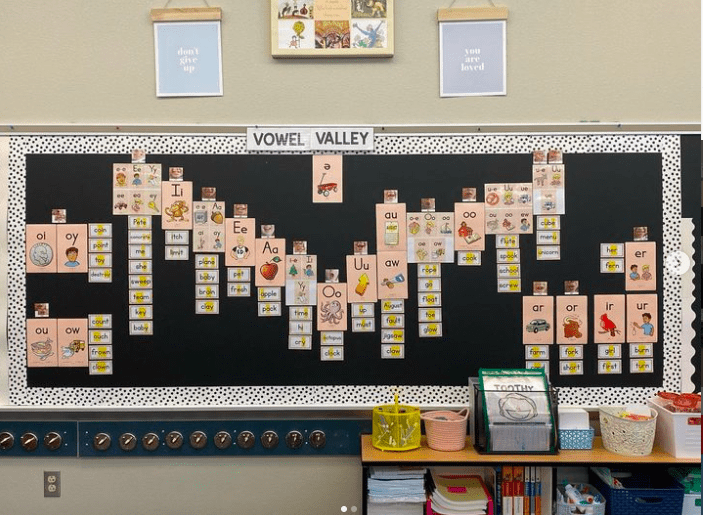
Source: @redlipsandapples
Unlock sounds
Add some motivational drama by “unlocking” sounds. Uncover them one by one as you teach them.

Source:@mrglynnprincipal
Add user-friendly touches
Encourage kids to use your sound wall for spelling help by adding mirrors. They can look at themselves while saying the sounds in a word and match their mouth positions to the mouth pictures. A convenient spot for writing helps too!

Add some high-frequency words
If you loved having high-frequency words on a word wall, there’s no reason you can’t add some of them to a sound wall. Focus on helping kids connect the sounds in the words to the letters that represent them.
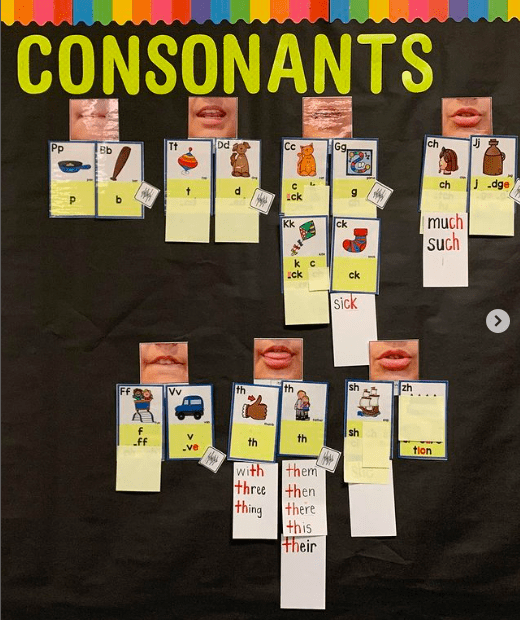
Source: @lappslibrary
Make it desk-sized
Personal resources can be invaluable for some kiddos.

Source: @sweetfirstiefun
Do you have a sound wall in your classroom? Tell us about it in the comments!
Want more articles like this? Be sure to subscribe to our newsletters.

